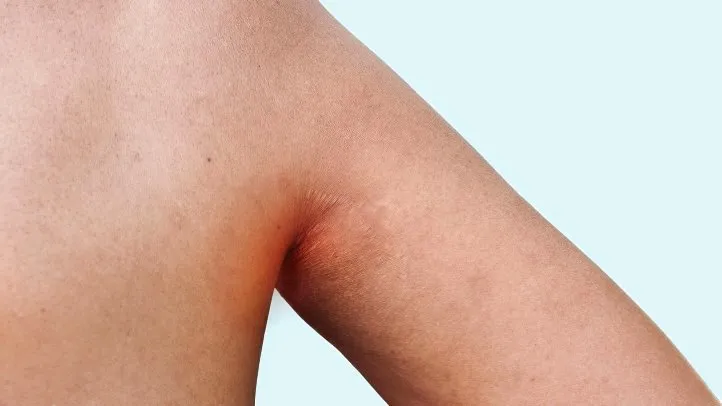Treatment of inverse psoriasis is difficult due to the location of the lesions. Skin folds often prove to be some of the most sensitive skin on the body, which increases the risk of a reaction to many of the topical drugs available for psoriasis treatment. Doctors often must treat not only the psoriasis but also accompanying infections caused by yeast or fungus.
Treatments for inverse or flexural psoriasis include:
Topical Corticosteroids These medications suppress the immune system and reduce inflammation, but they also can cause thinning of the skin and must be used carefully on the already-thin skin located in skin folds. If you also have an infection, doctors will sometimes use a topical steroid mixed with another medication — for example, a 0.5 or 1 percent hydrocortisone cream blended with antibacterial or antifungal medicine.
Roflumilast (Zoryve) and Tapinarof (Vtama) Creams These steroid-free topical medications suppress the immune system, reduce inflammation, and are safe to use long-term. Roflumilast was approved by the U.S. Food and Drug Administration (FDA) in 2022, with data showing its effectiveness in treating inverse psoriasis.
Calcipotriene This topical, available in multiple formulations, contains a synthetic form of vitamin D3 that can slow skin cell turnover. It can irritate the skin, so it must be used carefully in treating flexural psoriasis. It isn’t recommended for use on the genitals.
Coal Tar This soothing agent comes in a variety of over-the-counter and prescription-only formulations that can be applied to lesions. It’s also available as a liquid that can be added to bath water to help relieve symptoms.
Castellani’s Paint This product, with the active ingredient phenol, can be purchased over the counter. It’s a liquid that is painted onto skin and can help dry lesions in skin folds that have become moist.
Light Therapy Also known as phototherapy, this involves exposing lesions to ultraviolet light, typically via a UVB-therapy device prescribed for home use or in your doctor’s office. Natural sunlight is sometimes recommended, but it isn’t as effective as UVB devices and may be contraindicated if you take certain medications. You may be prescribed a medication to accompany the light therapy to enhance the body’s response.
Systemic Medication People with severe inverse psoriasis may need to take pills or receive injections to help treat their symptoms. Options include immunosuppressive medicines, like methotrexate (Trexall, Rheumatrex) and cyclosporine (Sandimmune, Neoral), or biologic drugs that target specific immune reactions. An oral medication called deucravacitinib (Sotyktu), which blocks a specific enzyme involved in inflammation, was approved by the FDA in 2022.
While inverse psoriasis can be painful and disruptive, there are several approaches to treating it. Talk with your doctor or dermatologist about the best way to ease your symptoms and find relief.




